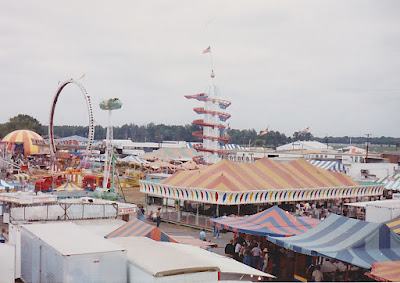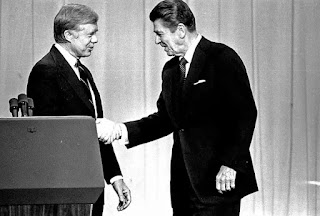There’s something undeniably magical about a carnival. The lights, the music, the scent of funnel cakes in the air—it’s a world that’s equal parts nostalgia and excitement. For me, carnivals hold a special place in my heart, sparking childhood memories of wandering through midways, clutching a cotton candy stick in one hand and a ride ticket in the other. And at the center of some of my many memories stands a giant in the carnival world: Conklin Shows.
The tale of Conklin Shows starts in 1924 with two brothers from Brooklyn, New York: James Wesley "Patty" Conklin and Frank Conklin. Patty was the kind of guy who could turn a bag of peanuts into a carnival empire—literally. By the age of 14, he was selling peanuts to make ends meet. But Patty had bigger dreams. When he entered the carnival business, he made a promise to himself: he was going to clean up the industry’s shady reputation. With his slogan, “Give the sucker a break,” Patty earned a reputation for fairness and honesty that was almost unheard of at the time.
Patty Conklin wasn’t just a businessman—he was a visionary. He was one of the first to introduce Kiddieland, an area designed just for kids and he wasn’t afraid to invest in unique, permanent attractions. For example, at the CNE fairgrounds, Conklin Shows built rides like the Mighty Flyer, a wooden roller coaster that thrilled visitors from 1953 to the early 1990s.
But like any good carnival story, Conklin’s tale isn’t without its ups and downs. By the late 1990s, the entire industry was feeling financial strain. Conklin Shows began selling off iconic rides like the Skywheel, Zipper and the Spider to cut costs. They had also begun to phase out independent rides and other operators what would book in their own rides alongside Conklin. By 2004, the company was sold for $100 million and merged into North American Midway Entertainment (N.A.M.E.), which today supplies rides to over 145 fairs, including the CNE and the Dade County Youth Fair in Miami.
Conklin’s legacy didn’t end there, though. Spin-off companies like World’s Finest Shows and Conklin Supershows carry the torch today. World’s Finest Shows, based in Ontario, is still a huge presence, serving over 60 fairs each year and continuing the tradition of safety and quality that made the Conklin name famous.
Looking back, I can’t help but smile at the memories of actually knowing that I had experienced Conklin Shows at one of the highest points in their existance—and I was just one of the millions of people who shared in the experience. Whether it was the thrill of the Polar Express, the smell of fresh popcorn or the glow of florescent and turbo lights of the the midway, Conklin made the carnival experience unforgettable.
What about you? Do you have memories of Conklin Shows or another favorite carnival? Maybe it was your first time riding the Ferris wheel or winning a stuffed animal at a game booth. I’d love to hear your stories, so drop a comment below. Let’s keep the spirit of the midway alive, one memory at a time.
And hey, if this story brought a little joy to your day or reminded you of your own carnival adventures, feel free to support keeping these stories alive. Your contributions, big or small, help ensure the magic of the midway lives on for future generations. Thanks for being part of this journey—we couldn’t do it without you.
https://www.facebook.com/adrianduarte
https://bsky.app/profile/adriansknitwits.bsky.social
https://www.instagram.com/adriansknitwits
https://www.threads.net/adriansknitwits












.png)

























